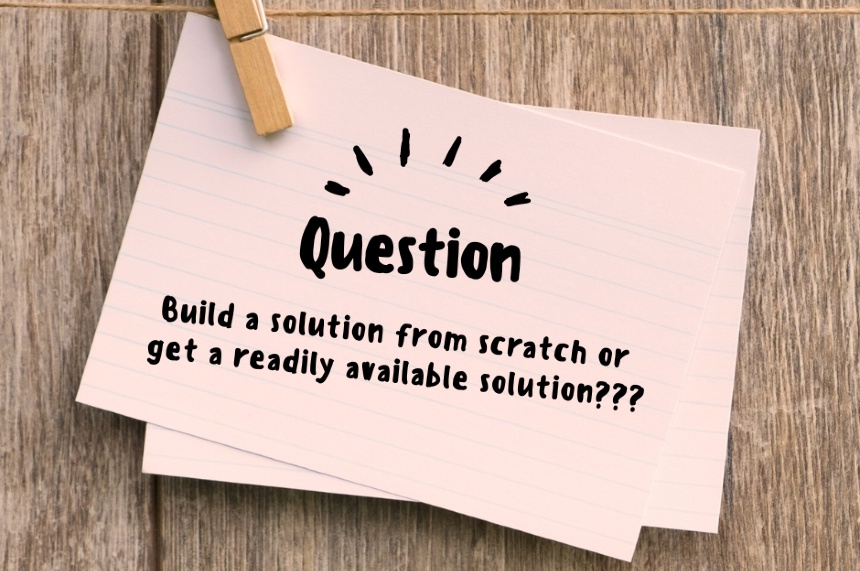5 Aspects of Effective Supplier Management
Business | September 28, 2022 | By
Supplier Management
Product manufacturing companies have suffered a lot in the past couple of years. The pandemic, post-pandemic effects, wars, trade embargoes, volatile commodity prices, inflation, labor relations, raw material hoardings, and supply disruptions have all caused tremendous stress. And amidst the turmoil, there is the rising consumer expectation and surges in demands. Companies have to wade through all of this and deliver products at the right time, quality, and price. So, the better the company is at supplier selection and overall supplier development, which is what supplier management is about, the better they are at launching quality products on time at competitive costs.
We have already emphasized the need for effective supplier management in our blog 3 Reasons Why a Sourcing Software is Needed for Effective Supplier Relationship Management. We’ve talked about how a successful product manufacturing company requires a strong supply base. The reason is that, in product manufacturing companies, direct materials constitute almost 65-80% of the cost of a product. And, managing a strong supply base requires extensive collaboration between internal and external stakeholders across the procurement lifecycle. And with extensive collaboration, you can achieve cost efficiency and maximum value with minimal supply risk. Thus, effective supplier management is a must-have and not a nice-to-have.
In this blog, we’ll look at the 5 key aspects for effective Supplier Relationship Management.
Supplier Selection
 Without best-fit suppliers, organizations will find it difficult to get what they want or deliver what they commit. There will be sub-par supplier performance and this will impact the product launch, product quality, and price. Sustainability-related issues might also crop up, which will affect the organization’s reputation, and thereby, its brand value, customer loyalty, and market share. So, effective supplier selection is one of the most important components of strategic supplier management.
Without best-fit suppliers, organizations will find it difficult to get what they want or deliver what they commit. There will be sub-par supplier performance and this will impact the product launch, product quality, and price. Sustainability-related issues might also crop up, which will affect the organization’s reputation, and thereby, its brand value, customer loyalty, and market share. So, effective supplier selection is one of the most important components of strategic supplier management.
In general, let’s see what goes into selecting effective suppliers.
-
- Determining the method of sub-contracting. This totally depends on the project undertaken. You can contract only for raw materials, sub-assemblies, or the entire product assembly (like a turnkey), according to your needs.
- Identifying potential suppliers and sharing requests for quotations (RFQs) and questionnaire surveys (when there is a need to onboard new suppliers) with them
- Comparing and analyzing the bids received. In the past, supplier selection criteria focused mostly on the trifecta of time, cost, and quality. But now, there is much more than meets the eye. When selecting suppliers for an NPD project, the behavioral patterns of both internal (procurement, quality, design, etc) and external (suppliers) stakeholders also have to be considered. It’s like before knowing what you want, you should know how you want it.
- Selecting the best-fit suppliers using multi-criteria decision-making methods.
And the process of selecting suppliers can only be as effective as the criteria based on which they are evaluated.
Supplier Selection Criteria
Generally, supplier selection criteria are determined by the purchasing situation. There is no ‘one size fits all’ approach here; every situation demands its own set of suppliers. Also, when selecting suppliers, other factors such as reputation and technological capability should also be considered in addition to the core criteria of time, cost, and quality. The more relevant and measurable the criteria set by the buyer organization to evaluate suppliers, the better their supplier quality will be. Here are some of the other criteria we need to consider while selecting suppliers:
Mutual trust and easy communication with the supplier: The level of trust is directly proportional to the supplier’s work quality and how effectively both the buyer and supplier fulfill their obligations. And because of the mutual trust, requirements, queries, and feedback can be easily communicated between each other.
Reputation and industry position: This refers to the market share in terms of the sales volume, supplier ranking, and brand value of the supplier against its competitors.
Production Capacity and Technology Capability: The capacity of the supplier to produce components in terms of volumes (whether the supplier will be able to meet your production volumes) and the ability to invest and adapt to newer technologies if the need arises.
Management and Organization: The reputation of the supplier management team and their efficiency in decision-making.
Labor Relations: Relationship between the supplier management and its workforce.
ESG and CSR-related activities: Responsibility towards natural resources and adherence to ESG guidelines and Scope 1,2,3 emissions. Also, suppliers’ responsibility toward society by giving back through CSR activities.
In addition, behavioral pattern-based criteria also need to be considered. But, most companies do not consider these factors. One of the reasons being they have to manually gather the data, which is an arduous task.
What if there’s a way? What if data for all the above criteria is available on a single platform?
Supplier Negotiation
 Supplier negotiation is a large part of procurement’s role, and it is one of the most challenging ones too. In light of today’s scenario, supplier negotiation should be done keeping in mind the needs of the buyer and supplier rather than aiming for the lowest possible price. And this is because the key objective is to build stronger strategic relationships with the supplier. Ideally, supplier negotiation should be used to determine the price, payment terms, delivery lead times, production time, quality standards, ESG guidelines, and more.
Supplier negotiation is a large part of procurement’s role, and it is one of the most challenging ones too. In light of today’s scenario, supplier negotiation should be done keeping in mind the needs of the buyer and supplier rather than aiming for the lowest possible price. And this is because the key objective is to build stronger strategic relationships with the supplier. Ideally, supplier negotiation should be used to determine the price, payment terms, delivery lead times, production time, quality standards, ESG guidelines, and more.
The following are some guidelines to keep in mind when negotiating with suppliers:
Objectives for Negotiation
Before negotiating with the supplier, it’s important to be clear about the required outcome. Is it cost, delivery, production time, payment terms, after-sales service and maintenance, quality standards, etc., or a combination of these factors? This provides a clear picture of what can be compromised and what cannot.
Know who you are Negotiating with
After setting up your objectives, it is important to know who you are dealing with. Thorough research into your potential suppliers will help you with valuable information. Also, each supplier is different, so each one needs a fresh approach.
All said and done, it is important to keep in mind that you need to develop and maintain a strategic relationship with your suppliers.
The steps mentioned so far are for negotiating with new suppliers. But there is another set of suppliers. They are what you would call powerful suppliers. And here’s what HBR has to say about handling such suppliers.
Bring new value to the supplier
This is the simplest method. You can add new value in a variety of ways, such as serving as a gateway to new markets or lowering the supplier’s risks.
Change the way you buy
Consolidate purchase orders, rethink purchase bundles, or reduce purchase volumes.
Find Alternative Supply Source
A high-risk option that has the potential to transform your prospects. You can take two approaches: Bring in a supplier from another market or vertically integrate to become your own supplier.
Play hardball
The riskiest of all. As a last resort, you can cancel all orders, both current and future, or threaten your supplier with litigation.
Whatever option you choose, you need to understand the problem, collaborate across functions, and think analytically.
And the reality on the ground is that buyers find it difficult to implement all of these. It is not because they do not know what to do or how to do it. It is because they are unable to do it.
Why? They are unable to make decisions because the required data is not readily available and gathering, collating, and arranging data takes a lot of their time.
Supplier Evaluation
Maintaining the quality of supplier performance is key to your business. Their performance has a direct impact on your organizational performance. Periodical supplier evaluations ensure that your suppliers perform their best and take corrective actions to resolve their mistakes. Supplier evaluation helps you understand,‘What went wrong both on the supplier and buyer end’ and ‘What can be done to correct the mistakes to improve overall suppliers’ performance?
Here are a few things to consider while conducting supplier evaluation.
-
- Set the performance indicators
- Group suppliers into similar categories based on geography, product type, etc.
- Work closely with suppliers for feedback
- Take relevant action
Evaluation of suppliers requires a large amount of data. Gathering data, collating it, and presenting it in an actionable format takes a lot of time. Buyers sometimes spend more time getting the data than actually working with the data. Information, such as cost, quality, on-time delivery metrics, and other KPIs, is difficult to manage manually because it must be gathered from multiple channels and systems. Moreover, when choosing suppliers for a new project, past performance data is crucial, otherwise incompetent or unsuitable suppliers may be used.
Would it not be nice if all the details of the suppliers were updated in real-time and regardless of their performance, data is available in a reportable format? And that too, with a click of a button?
Supplier Innovation
 Technology is developing at an exponential pace. What is revolutionary now becomes outdated tomorrow. Customers want feature-rich products that offer value for the price they pay. And they are expecting it frequently. So, while complexity increases, product lifecycles are shrinking. Companies have so much to accomplish in so little time.
Technology is developing at an exponential pace. What is revolutionary now becomes outdated tomorrow. Customers want feature-rich products that offer value for the price they pay. And they are expecting it frequently. So, while complexity increases, product lifecycles are shrinking. Companies have so much to accomplish in so little time.
Working with novel ideas requires mastering new fields. The situation is such that even major companies have to bring in innovations and at the same time expand their portfolios. For example, automotive industries have to also concentrate on internal combustion engines, hybrid technologies, as well as electric powertrains. All of this cannot be achieved alone. And suppliers play a huge role here.
Here are a few reasons why working closely and innovating with suppliers is beneficial.
-
- According to McKinsey, externally sourced innovations can be commercialized 40% faster than home-grown ideas.
- Regional suppliers will have a strong local understanding of their area. This will aid in the development of attractive offerings for those customers.
- Supplier Innovation can open up new business opportunities.
- When suppliers work together with the buyer organization right from the initial stages of product development, as procurement should do, they can unlock new opportunities and optimize the total cost of ownership.
While innovating together with suppliers there will be a few changes in the way you work. And here’s what you need to understand.
-
- There will be a complete culture shift in the relationship between you and the supplier organization. You will have to charter the uncharted. It is completely different from most transactional-based buyer-supplier relationships.
- Organizations need to build a lot of trust. Working in a more open manner is difficult when most relationships are based on negotiating tough deals. The buyer and the supplier may be reluctant to reveal a lot of details as one might fear that the other would leverage this against future negotiations. Without mutual trust, there will be no innovations.
That said, do you think procurement will have time to work on innovations and the like when they are swamped with emails, spreadsheets, and reams of papers?
Supplier Management done right with Zumen
To say that procurement teams play a crucial role is an understatement. They are the ones who drive effective supplier management. But to be as effective as expected, they need to be unburdened from many of their current practices.
They need a platform that is able to capture all the supplier-related data, that they can use when coming up with supplier selection criteria.
A platform where the data is available in real-time and not snapshots of various sourcing moments. This helps them save a lot of time in gathering, collating, and presenting the information.
And they need a platform where they can compare multiple supplier quotes on a single screen, and approve and onboard suppliers.
Zumen can give you all of this and more. Sounds interesting? Talk to us at [email protected] or schedule a free demo.
















